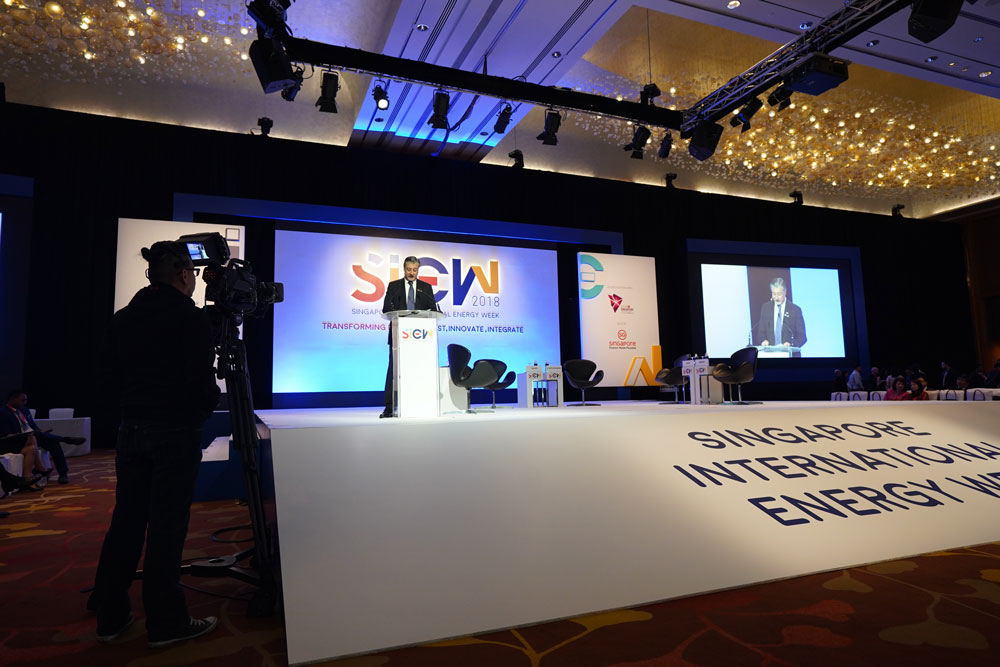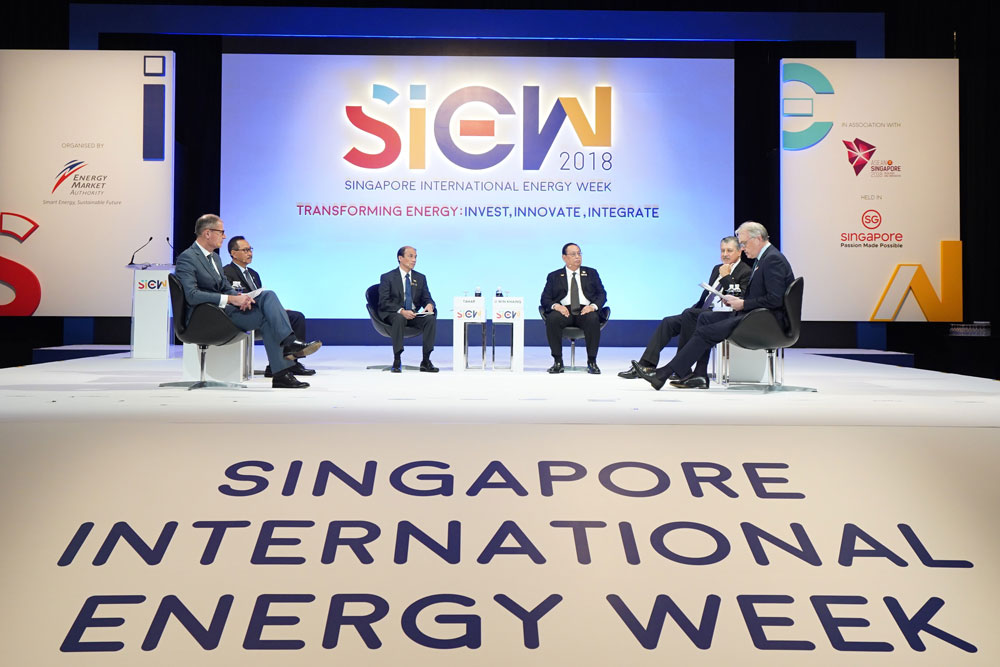Panellists discuss infrastructure financing, the investment challenges, and the roles of policymakers and industry players in enabling bankable, sustainable energy projects. By Jeremy Yap
Adnan Z. Amin, Director General of the International Renewable Energy Agency (IRENA) opened the Singapore Energy Summit with a Keynote Address on investments in energy.
The cost of renewables has fallen dramatically since 2010: by as much as 73 percent for solar energy and 30 percent for wind energy in that same period, said Mr. Amin.
Enabling solutions are witnessing similar trends. The total installed cost of energy storage could fall by 50 to 60 percent by 2030. These developments would dramatically transform the energy landscape.
Southeast Asia has emerged as one of the world’s fastest growing economies, and renewable energy will be key in sustaining this growing energy demand while securing considerable socio-economic and environmental benefits for the region.
To reap these benefits, the seeds must be sowed today. Between 2006 and 2016, nearly US$27 billion have been cumulatively invested into renewable energy.

However, there is a need to scale up these investments well beyond these levels.
Analysts from IRENA and the ASEAN Centre for Energy (ACE) reported that a total investment of US$290 billion is required for ASEAN to achieve its regional energy targets. The IRENA corporate sourcing report showed that corporations from a wide range of sectors in over 75 countries are already procuring or generating their own renewable energy.
Mr. Amin closed his opening address by saying that public money had to be spent wisely and ASEAN has to ensure an attractive environment for private investments for renewables to be a key factor in sustaining economic growth for the region. Mr. Amin later joined panellists to further the discussion.
H.E. U Win Khaing, Union Minister for Electricity and Energy of Myanmar, stated that Myanmar is a country with a lot of untapped investment potential and possessed many indigenous natural resources, such as hydropower. Myanmar has taken steps to create an enabling environment for foreign investments such as renewing a century-old Company Act that would allow corporations to invest up to 35 percent equity in Myanmar’s local companies.

Dr Arcandra Tahar, Vice Minister of Energy and Mineral Resources, commented that Indonesia had to provide cheap energy in order to maintain its economic growth. Indonesia faced financing challenges with the production of its renewable energy from the high interest rates offered by the local banks. Coupled with Indonesia’s abundance in fossil fuel resources, Dr Tahar opined that it would be difficult for Indonesia to achieve a cost of $0.06/kWh for solar energy.
Innovative solutions, driven by investments, are required to solve Indonesia’s technical and economic challenges in increasing its renewable energy mix. Bambang Susantono, Vice President, Knowledge Management and Sustainable Development of Asian Development Bank (ADB), shared that there were three emerging trends observed by ADB in Asia: 1. Solar rooftops for renewable energy generation, 2. Smart grids, integrated with energy storage systems, for transmission and distribution, and 3. digital technology for demand and response.
Ditlev Engel, CEO of DNV GL – Energy, echoed Mr. Amin’s sentiment that affordability of renewable energy was not an issue as the price would continue to fall, but the key concern was setting up the necessary frameworks to facilitate the access of investments. He continued that partnerships with companies outside the energy sector, such as Facebook, would be pivotal in driving this investment in renewable energy in many countries.